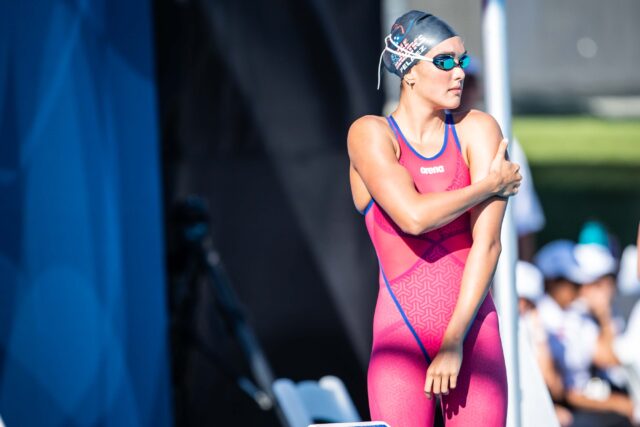
Curious how NFL teams build and sustain successful offensive lines? We’ve unlocked an article previously released in our Pride of Detroit Direct newsletter.
To give readers an inside look at the Pride of Detroit Direct (PODD) newsletter, we’re unlocking a previously published piece written for subscribers. If you’re interested, PODD is running an NFL Draft special discount of 29% off a yearly subscription — just use the discount code: DRAFTPICK29.
When it comes to roster building in the NFL, there are a variety of ways teams can approach the process. When teams focus their positional spending on one group of players, that often becomes the identity of their organization. For example, when you think of the 49ers, you likely think defensive line. And it should come as no surprise that among NFL teams, they have the most cap space allocated to this position group in 2024.
For the Detroit Lions, it’s clearly their offensive line, and sure enough, the positional spending reflects that. Like the 49ers and their defensive line, the Lions have heavily invested both draft capital and cap space in their pursuit of building one of the best offensive lines in the game.
But that success comes with a price. And when players in these positional units become unrestricted free agents, they typically demand top dollar on the open market. This often leads to those players leaving for a higher-paying contract with another team—just like Jonah Jackson did this March.
But the good news for the Lions is that there’s a formula to building an offensive line, and they’re in a good spot to maintain their success. So, what’s the formula? I’ll get there in a second but let me set the table first.
Let’s take a look at some of the best offensive lines in the NFL, how much they’re spending on the unit as a whole, and how they’re constructed.
According to PFF’s end of 2023-24 season offensive line rankings, the Eagles finished first, the Lions second, Colts third, Falcons fourth, and Ravens fifth. When we compare these rankings to the position spending, things line up in the same ballpark. In 2023, among teams spending on their offensive lines, the Eagles ranked ninth, Lions spent the second most, Falcons, third most, Colts fourth most, and Ravens fifth most.
But it’s not as simple as just spending money to equal success.
The team that spent the most on their offensive line in 2023 was the Texans, who finished 15th in PFF’s rankings, but they also dealt with injuries that impacted their production, so there’s a built-in excuse there. But when we expand further, we see that the next five teams on the spending list all finished in the bottom half of the league on PFF’s list.
The Bengals spent the sixth most money yet finished 26th in PFF’s rankings. The Saints were seventh in spending and finished 23rd, Steelers eighth most spent and finished 17th, Jaguars spent the ninth most and finished 27th, while the Jets spent the 10th most and finished 31st—ouch!
If we look at the teams that find success on the offensive line, they arrive at that success not by accident but by planning, investing draft capital, developing, and strategically re-signing their homegrown players.
In 2023, the Eagles invested in three homegrown veterans who procured the bulk of their salary cap, with all three being in the top six of their team’s cap hits. The other two spots were filled out by players still on rookie contracts, and each was drafted in the second round. In 2024, Jason Kelce retired, and the Eagles plan on replacing him by shuffling their interior offensive line and promoting another player (a third-round pick) who is still on a rookie contract.
If we look deeper at the Colts, Falcons, and Ravens, we see similar patterns.
The Colts have three veterans taking up top-five cap hits on their roster, while the other two starting spots are players on rookie deals. The Falcons also have three veterans (all first-round picks) taking up spots in the top seven of Atlanta’s salary cap, with two players on rookie deals in the other two spots.
The Ravens are leaning on a homegrown veteran with a top-four salary cap hit, and potentially four homegrown players on rookie deals. Last season, they only relied on two players on rookie deals and invested the other two spots on veterans.
I tell you all of this to illustrate the point that the top offensive lines in the NFL, typically lean on three expensive veterans (almost all end up amongst the top salary cap hits on their teams) and two homegrown players on rookie contracts for their offensive lines.
The Lions are also following a similar pattern, but they’ll need to be proactive to maintain this strategy.
In 2023, the Lions deployed three veterans (Taylor Decker, Frank Ragnow, and Graham Glasgow) and two players on rookie contracts (Penei Sewell and Jackson). Even though Graham departed for a minute, all five players started their careers in Detroit.
With Jackson gone, the Lions took the same initial step as the Ravens and signed a stopgap veteran in Kevin Zeitler, who ironically is coming from the Ravens. While Zeitler is likely nearing the end of his career, he is still operating at a high level and should be sufficient for 2024.
That being said, it would be foolish for the Lions not to have a succession plan for Zeitler in place, and that means drafting an offensive lineman in this draft—and it should probably be a high investment pick in the 2024 NFL Draft.
Then, a year from now, Sewell will be shifting roles from a player on a rookie deal to a more deserving veteran paycheck, while at the same, Glasgow will also need a succession plan. That means, selecting another offensive lineman with a high draft pick in 2025 should be in general manager Brad Holmes’ plans.
The Lions’ offensive line is amongst the most talented in the NFL—and arguably they ARE the most talented group in the NFL—but if they want to be able to maintain that status, they’ll need to be aggressive in their planning and spending, and it all starts with spending a high draft pick on an offensive lineman in this draft.















You must be logged in to post a comment Login